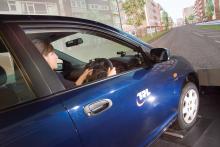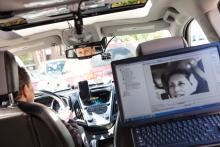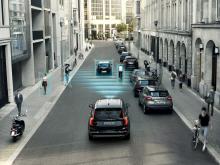
Jon Masters looks at how drivers will be trained to use the increasing number of advanced driver assistance systems being incorporated into modern cars
Advanced Driver Assistance Systems (ADAS) are now available in the model ranges of many of the leading vehicle manufacturers. Their aims are to increase safety and relieve drivers of stress by giving them the option of allowing vehicles to respond automatically to certain situations. While this sounds fine in theory, it would seem to demand a whole new understanding of driving.In years to come, are dashboard displays going to become over-crowded and operating manuals too complex? Will the process of purchasing a car demand onerous additional training or the driving involve too much thought, bringing ADAS developments to a halt?
In all probability not, according to the manufacturers. They are generally in the fortunate position of having large budgets for their programmes of research and development, so display greatest confidence in the ADAS technology already introduced or heading for the showrooms. There is a little more detectable unease among those ADAS experts not enjoying such levels of R&D funding but even their concerns relate mostly to cooperative vehicle systems with a more distant horizon of introduction. Regulatory regimes, standards and the principles around which autonomous invehicle ADAS are being developed suggest nothing but a smooth transition to more automated driving.
Such a conclusion comes also from the rate at which new systems are being introduced. If the gap between the advent of cruise control and its more recent ‘adaptive’ evolution (which maintains a constant distance between its host vehicle and that in front) is indicative, then full automation of throttle, braking and steering for lane-change manoeuvres could be 20 years away or more. Systems of this level of sophistication have been developed and tested, but getting them to vehicle production lines is another matter.
By the time full automation appears, if at all, making use of the more elementary parts of ADAS is likely to have become second nature.
Gradual process
That drivers will get used to the operating principles of the technology is a crucial consideration of automation developments,” saysDriving assistance technologies already introduced to BMW’s model range – besides systems that don’t involve any driver input, such as stability control – include Lane Departure Warning, Active Cruise Control and Parking Assistant, which takes over the acceleration and braking parts of the parking process. Similarly, top-of-the-range Hondas feature Collision Mitigation Braking, Lane Keeping Assist and Adaptive Cruise Control.
None of these systems yet combine automated braking and lane control but developments thus far represent a significant change of approach, according to
The desire to maintain the enjoyable aspects of driving remains. Singer: “We don’t want to take away the joy of driving but in tedious situations like slow-moving traffic or a jam, it could be convenient to hand over not only the acceleration to Active Cruise Control, but also the steering. In such situations we can imagine automated driving functions. An Emergency Stop Assistant would go further. What if the driver is somehow not capable of driving? Is it safer for an automatic switch to fully automated mode, or to just see what happens?”
Legal perspectives
Or, what if an accident results from a driver’s misunderstanding of how much control is taken over by an ADAS system? Can the driver claim that the manufacturer or dealer gave insufficient explanation?None of the vehicle manufacturers are likely to put an Emergency Stop Assistant, or any technology that takes complete vehicle control, into production any time soon, not least because they cannot from a legal standpoint. The Vienna Convention is clear – the driver is ultimately responsible for control of his or her vehicle and the same applies everywhere. There is nothing to suggest that stories of claimants successfully suing because they had not been told how cruise control works are anything but urban myth.
“Law is clear on this. Although manufacturers have introduced more ADAS technology, liability stops with the driver,” says motoring law specialist Anton Balkitis of the UK-based law firm Rothera Dowson. “As a minimum, dealers may pass on information in the form of a user manual but it is always the responsibility of the operator to learn know how to use a vehicle. Anyone with common sense would make sure they know what a vehicle is capable of before taking it on the road.”
On the basis that not everyone demonstrates equal levels of common sense, it can be assumed that user manuals will not be read by all. However, in addition to the assertion that drivers will get used to ADAS systems introduced gradually over time, it is against the present legal framework that technology is being developed to be intuitive or instinctive for the user.
Furthermore, says Flament, “Manufacturers are paying little attention to driver training, but they are trying as much as possible to avoid introducing technology that demands additional tuition, because this would be a show stopper for selling the system.
“To ensure a safe common approach, the manufacturers have established a self-regulating set of rules in the form of a code of practice that has been scrutinised by their lawyers and which, if followed, allows them to demonstrate adequate duty of care.”
The code is based on a principle of “controllability”, Flament adds. Systems have to be interceptable and gradually inform of a hazard or an automated action about to take effect if no reaction is received from the driver. “Vehicle operators also have to be able
to see at the blink of an eye what the technology is doing, via sound and light emitted from the dashboard.
“These principles are applied as a code of practice for development of all ADAS technology.”
According to Singer, BMW’s ADAS strategy is about keeping ‘assistance’ in focus. The more advanced and fully automated systems, such as Emergency Stop Assist, are being developed by BMW to help inform development of ADAS technology that the company can and does intend to introduce. This includes the company’s Traffic Jam Assistant, expected to be included in BMW ‘i-concept’ vehicles
from 2013 (see Sidebar).
Traffic Jam Assistant
Traffic Jam Assistant will be the next ADAS system to be introduced to BMW vehicles via the i-concept range. It is due for launch in 2013 and will work at speeds of up to 40km/h. Once activated by the driver, it will maintain a safe distance to the vehicle in front with automated acceleration and braking, and provide steering control to keep the car in its lane as long as the driver keeps at least one hand on the wheel.
According to BMW, Traffic Jam Assistant is intended to relieve the stress of situations of road congestion, but its success may hinge on drivers’ attitudes.
BMW’s R&D spokesperson Katharina Singer: “Where traffic is merging at junctions, although many would think it is vehicles joining the road or motorway that should adjust speed accordingly, in reality it is drivers already on the main carriageway that have to slow down. The Traffic Jam Assistant will do the same.
“There is always driver input somewhere,” Singer says. “If too much control is taken away from the driver, then they are taken ‘out of the loop’. With the semi-automated systems that we are introducing, the driver always has to react and be involved. The ADAS willassist and enhance safety but keep the driver in the loop.”
Training principles
There are two principles of driver training, Singer adds. The driver can always choose to activate or deactivatethe ADAS system.
“And it has to be as intuitive as possible, with visible warning lights and icons in peripheral vision relating to where the hazard is – not just vibrations through a steering wheel,” she says.
“Of course we will tell people what the ADAS is for and capable of, and it will follow all regulations. We have to think of every care that we can and programme the technology to cope with all normal occurrences we can think of but there always things that are unpredictable, which is partly why the driver has to remain ultimately in control. There are some decisions, such as whether it is safer to take evasive action or collide with another vehicle, which technology cannot make.”
All of this raises serious questions about whether vehicle-to-vehicle cooperative ADAS can ever be introduced. BMW’s R&D programme includes a system whereby vehicles will interact to the extent that each driver is warned of the other’s presence, but the
idea of convoys moving at controlled speed and headway seems unlikely, partly because in all likelihood such automation would require a dedicated lane. Researcher Nick Reed in TRL’s Human Factors & Simulation Group says: “In a current project we are looking at how drivers of vehicles not controlled by an automated cooperative system react when encountering vehicles that are. The research suggests difficulty.”










